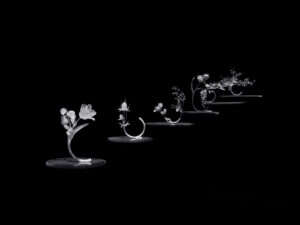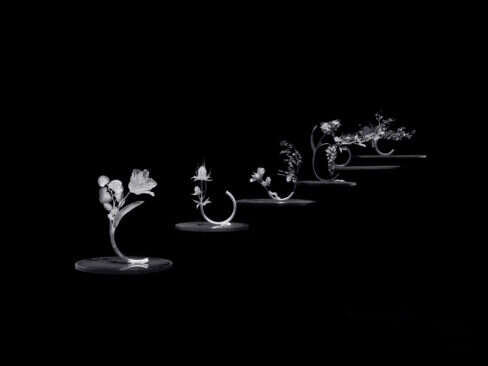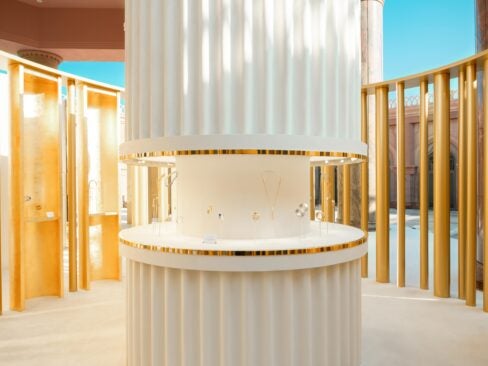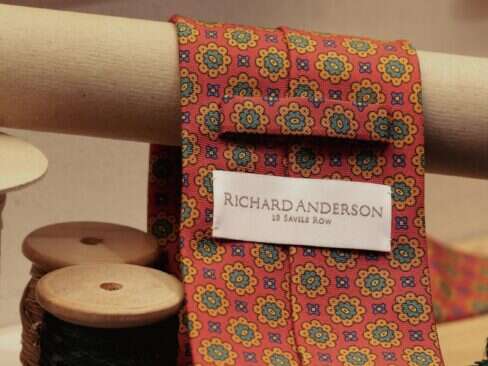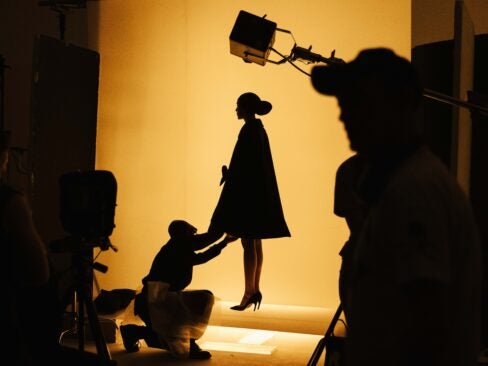The Blue Moon Diamond has been categorized as an extremely significant find – and one of the newest and rarest stones currently worldwide – due to its unique color, clarity and size. Cut from the rough, the internally flawless gem is fashioned in a cushion-cut shape at a noteworthy 12 carats. The trace element Boron within the carbon structure of the stone is responsible for its blue color. Diamonds with a strong saturated color represent only a tiny percentage of all natural diamonds – and only a minute percentage of all natural color diamonds are blue, making The Blue Moon Diamond exceptionally momentous. The stone was recently found in a mine northeast of Pretoria, South Africa, known for discovering some of the most recognized blue and other color diamonds in the world, the Cullinan mine.
 Cora International, a world leading manufacturer and supplier of white and fancy colored diamonds, announced today that it will unveil one of the rarest stones, a Fancy Vivid Blue. “The Blue Moon Diamond” will be housed in a special, temporary exhibition at The Natural History Museum of Los Angeles County beginning on September 13.
Cora International, a world leading manufacturer and supplier of white and fancy colored diamonds, announced today that it will unveil one of the rarest stones, a Fancy Vivid Blue. “The Blue Moon Diamond” will be housed in a special, temporary exhibition at The Natural History Museum of Los Angeles County beginning on September 13.
To celebrate the unveiling of the finished stone, The Natural History Museum of Los Angeles County will host a special exhibition from September 13 through January 6, 2015. Visitors will be able to view The Blue Moon Diamond in person and learn more about the stone.
 “Fancy vivid blue diamonds are extremely rare and the Blue Moon is no exception. It is a historic stone that is one of the rarest gems with this color and in this size to be found in recent history,” said Suzette Gomes, CEO of Cora International. “After seeing the stone’s color and understanding its significance, it was fitting to name it ‘The Blue Moon Diamond’ as not only is its shape reminiscent of a full moon, but the metaphor for the expression is exactly what one could say about the occurrence and existence of such a gemstone.”
“Fancy vivid blue diamonds are extremely rare and the Blue Moon is no exception. It is a historic stone that is one of the rarest gems with this color and in this size to be found in recent history,” said Suzette Gomes, CEO of Cora International. “After seeing the stone’s color and understanding its significance, it was fitting to name it ‘The Blue Moon Diamond’ as not only is its shape reminiscent of a full moon, but the metaphor for the expression is exactly what one could say about the occurrence and existence of such a gemstone.”
A blue moon is used colloquially to mean a rare event, as in the phrase “once in a blue moon.” A vivid blue that is categorized as IF, internally flawless, denotes why this stone is among the rarest diamonds in the world.
To showcase the significance of this stone, the Gemological Institute of America (GIA) has made a monograph of The Blue Moon Diamond. According to the GIA, a monograph offers detailed documentation of outstanding gems in book format, offering a holistic perspective on their character and significance. The GIA Monograph report “fleshes out the details of a gem’s story, highlighting the features that elevate the gem to the realm of the truly exceptional.” The GIA has also written a special letter for this stone due to its rarity and beauty.
“This special exhibit fits within the Museum’s mission to enhance discovery of the natural world through furthering the future of diamond research. Blue diamonds are among the rarest of all natural colored diamonds,” said Eloïse Gaillou, curator and diamond expert, Natural History Museum of Los Angeles County. “The exhibit will provide a once-in-a-lifetime opportunity for visitors to see one of the world’s most exquisite blue diamonds in person.”
The largest ever rough gem diamond was discovered at the Cullinan mine in South Africa in 1905, and was presented to the British monarch Edward VII. The 3,106-carat stone was then cut, with two of the principal diamonds forming part of the British crown jewels – the 530-carat First Star of Africa and the Second Star of Africa at 317 carats, now held in the Tower of London.
(Source: Cora International)






